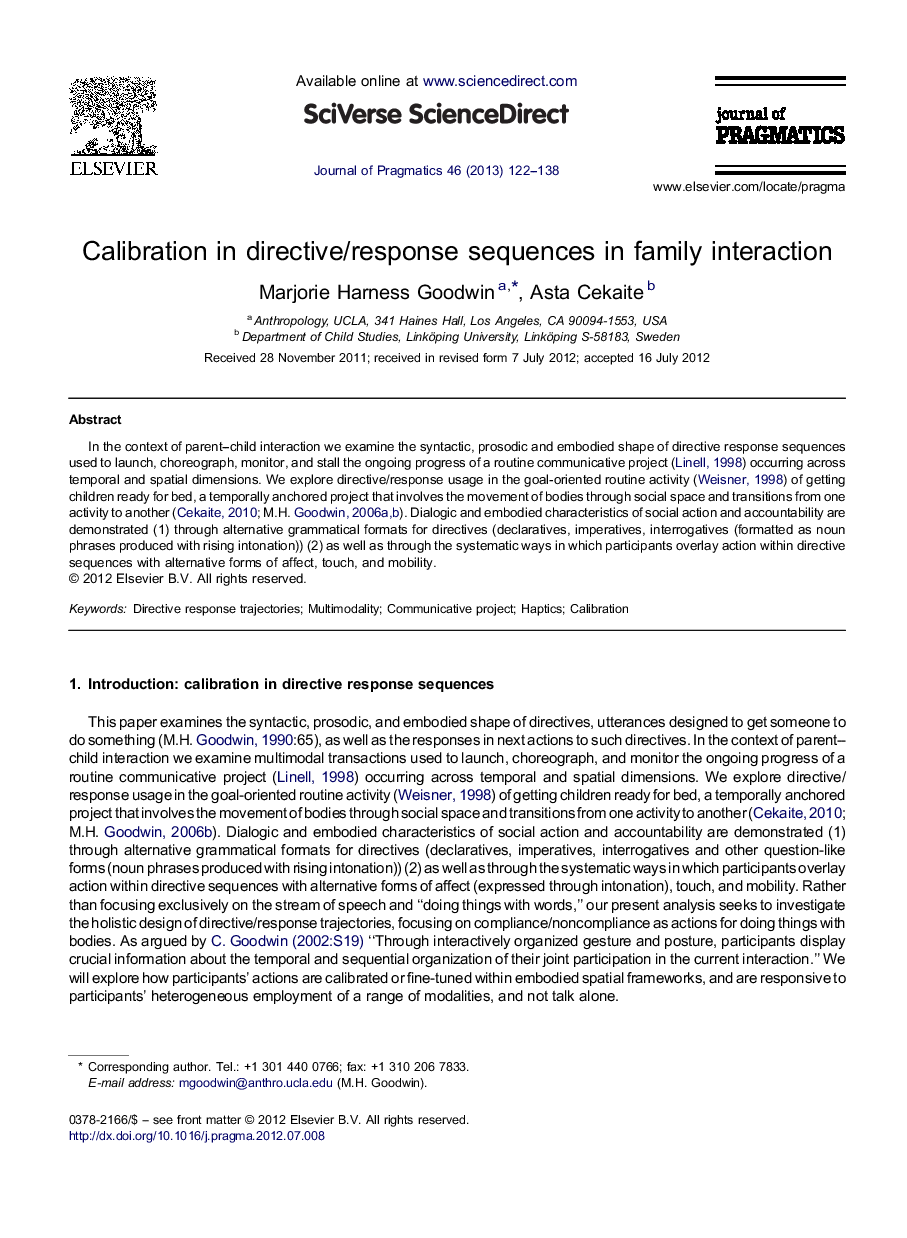| Article ID | Journal | Published Year | Pages | File Type |
|---|---|---|---|---|
| 933041 | Journal of Pragmatics | 2013 | 17 Pages |
In the context of parent–child interaction we examine the syntactic, prosodic and embodied shape of directive response sequences used to launch, choreograph, monitor, and stall the ongoing progress of a routine communicative project (Linell, 1998) occurring across temporal and spatial dimensions. We explore directive/response usage in the goal-oriented routine activity (Weisner, 1998) of getting children ready for bed, a temporally anchored project that involves the movement of bodies through social space and transitions from one activity to another (Cekaite, 2010; M.H. Goodwin, 2006a and Goodwin, 2006b). Dialogic and embodied characteristics of social action and accountability are demonstrated (1) through alternative grammatical formats for directives (declaratives, imperatives, interrogatives (formatted as noun phrases produced with rising intonation)) (2) as well as through the systematic ways in which participants overlay action within directive sequences with alternative forms of affect, touch, and mobility.
► Directive/response sequences make use of affect, touch and mobility as well as talk. ► Praxeological context of directives involves the temporal organization of actions and activities. ► Alternative directive/response trajectories construct different types of social organization. ► Choreographing attention/agreement to perform action in future central for cooperative action. ► Through body alignment, gaze, prosody, speech participants display current sense of involvement.
